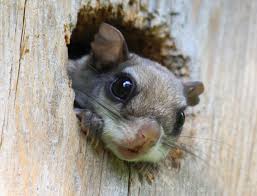Wildlife & Habitats
Scenes From Our Sanctuaries: Flying Squirrel
Our Smith’s Dock Sanctuary is home to many species, including the threatened Diamondback terrapins and flying squirrels! Flying squirrels are nocturnal and rarely seen by humans, but our wildlife cameras recently captured this resident foraging for food. Flying squirrels are helpful to the environment by spreading fungee spores and seeds, which are beneficial to the…
Read MoreCritical Cape Cod Habitats
CRITICAL CAPE COD HABITATS Salt Marshes Coastal Plain Ponds Sandplain Grasslands Pitch Pine-Scrub Oak Barrens Coastal Heathlands Kettle Hole Ponds Atlantic White Cedar Swamp & Red Maple Swamps
Read MoreSpecies of Concern/Protected Species
THE BARRENS BUCKMOTH : A Species of Concern Protected by an Orenda sanctuary Orenda’s Makepeace Sanctuary and our new Mercy Lowe property in Mashpee, are home to the Pine Barrens Buckmoth, a state-listed “Species of Special Concern.” The barrens buck moth, Hemileuca maia maia, is listed as a threatened species in the MA Heritage and Endangered Species Program, as only…
Read MoreWildlife Habitat FAQ
WILDLIFE & WILDLIFE HABITAT FAQ Q: What should I do if I see a baby bird or other animal without its mother? A: You should leave infant wildlife alone, since they are seldom truly orphaned. Do not move them to another area as their parents will not be able to find them. Leave baby mammals…
Read MoreSalt Marshes
CRITICAL CAPE COD HABITATS Salt Marshes Salt marshes are the most dominant coastal wetland on Cape Cod. They occur behind barrier beaches and within estuarine systems and are divided into two major zones; the low marsh and the high marsh. Low marshes are flooded twice daily and the high marsh is flooded once a month.…
Read MoreSandplain Grasslands
CRITICAL CAPE COD HABITATS Sandplain Grasslands Consist of open, dry and sandy areas (similar to mid-western prairies) that were derived from glacial deposits. These maritime-influenced communities are common to Cape Cod and the Islands. Prairie-type grasses such as Little Bluestem dominate Sandplain grasslands. Residential development and suppression of fire are the two greatest threats to…
Read MoreCoastal Heathlands
CRITICAL CAPE COD HABITATS Coastal Heathlands Coastal Heathlands consist of low shrub communities dominated by the heath family of plants. Heathlands may occur as small patches within pine barrens or grasslands, or they may extend over large areas and envelop small grasslands and Scrub Oak barrens. Heathlands are extensive on Nantucket. On Cape Cod they…
Read MoreCoastal Plain Ponds
CRITICAL CAPE COD HABITATS Coastal Plain Ponds The largest concentration of coastal plain ponds in New England occurs on Cape Cod. They are shallow bodies of freshwater and are frequently found near Pine-Oak Woodlands. Fed by groundwater without inlets or outlets they experience variable water elevation. When the water level is low the coastal plain…
Read MoreKettle Hole Ponds
CRITICAL CAPE COD HABITATS Kettle Hole Ponds Most ponds and lakes on Cape Cod are the result of kettle hole depressions left by glacial ice chunks from the last glacial maximum. Their water levels are determined by precipitation and groundwater fluctuations. Human consumption of this water threatens these ponds. An example of a kettle hole…
Read MoreCritical Cape Cod Habitats
CRITICAL CAPE COD HABITATS Atlantic White Cedar Swamp and Red Maple Swamps Once an abundant forested wetland community on Cape Cod, these swamps exist sporadically with a few old growth stands. They can be found within dune systems and in low -lying depressions. In addition to the dominant Atlantic white cedar, trees that are included…
Read More
